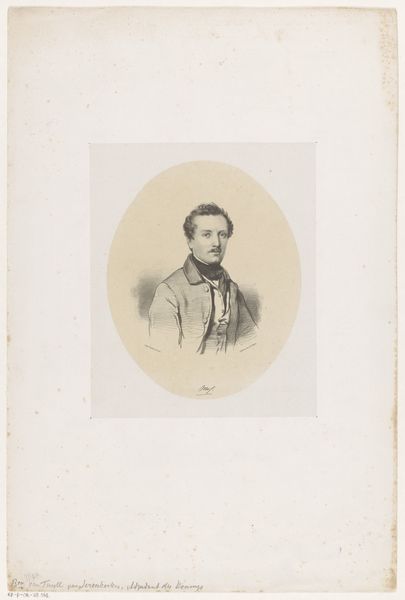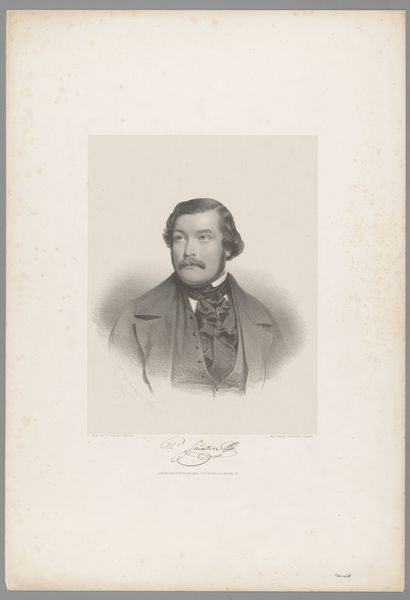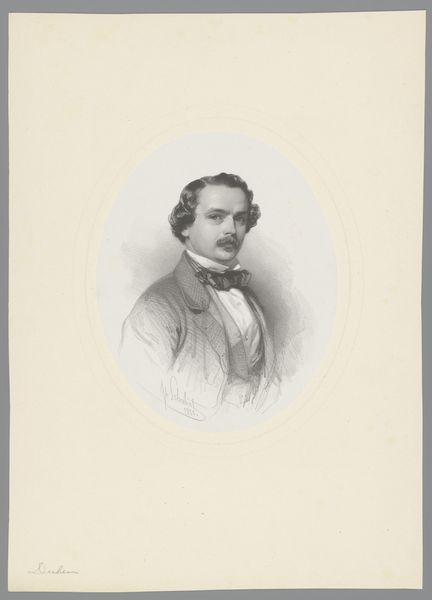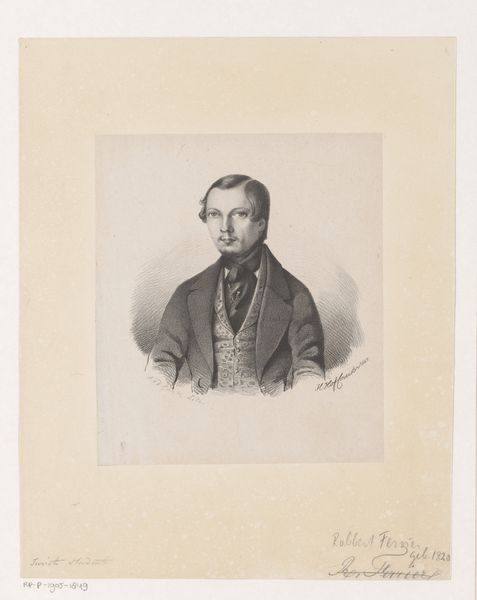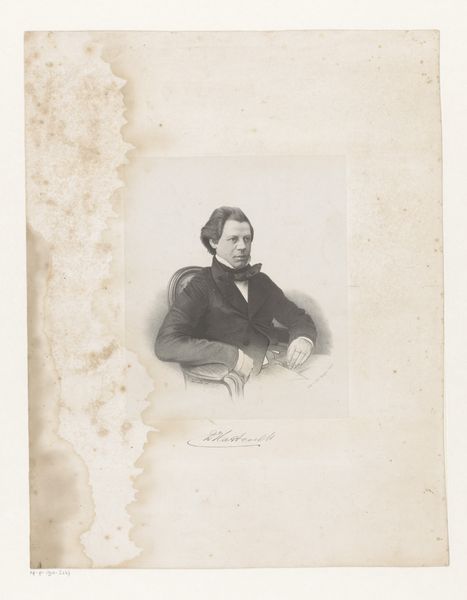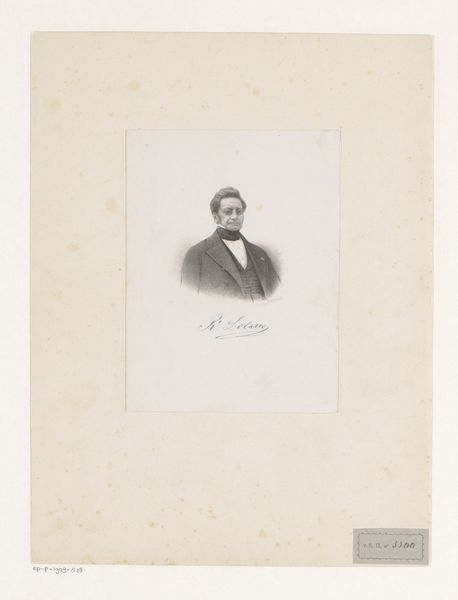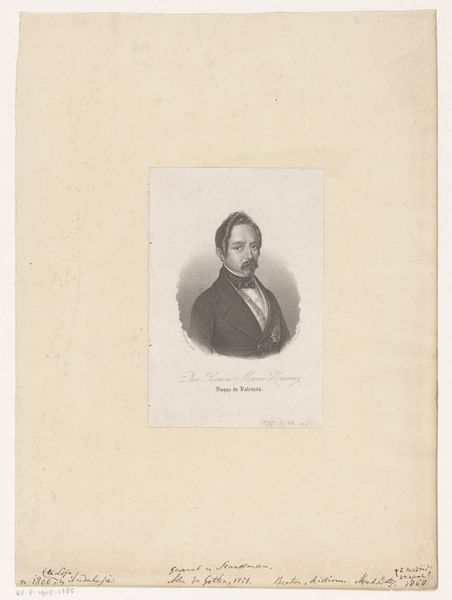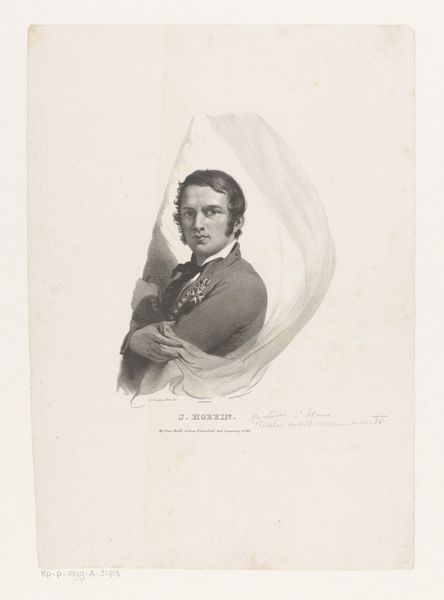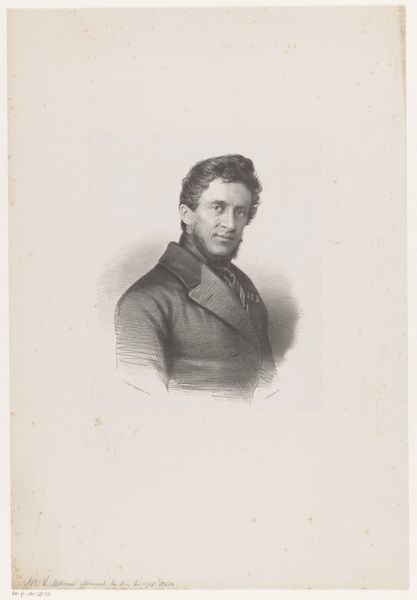
drawing, pencil
#
portrait
#
pencil drawn
#
drawing
#
light pencil work
#
pencil sketch
#
pencil drawing
#
romanticism
#
pencil
#
realism
Dimensions: height 452 mm, width 313 mm
Copyright: Rijks Museum: Open Domain
Editor: Here we have "Portret van Julius Schramm," made sometime between 1815 and 1874 by C. Steckmest. It’s a pencil drawing and, honestly, it gives me the feeling of something captured in a fleeting moment, almost like a candid photograph. What’s your interpretation of it? Curator: Well, consider the context. This portrait emerges during a period of growing bourgeois self-awareness. Likenesses become accessible, no longer the sole domain of the aristocracy. How do you think that shift in access impacts the artist's approach to portraying Schramm? Is this image meant for public display, or something more personal? Editor: I guess more people having access to portraiture would lead to more artists focusing on details and individual expression rather than just conveying status. So perhaps, it was commissioned by someone close to him, not intended for a broader audience. Curator: Exactly! This speaks to the increasing importance of individuality. We see here a more ‘realistic’ depiction, fitting for consumption within a rising middle class who value individuality but might still emulate certain social norms within their attire. The careful linework hints at an engagement with emerging realist aesthetics and scientific methods, something appreciated within increasingly pragmatic, commercially oriented societies. How might institutions—academies or public salons— have encouraged or constrained these artistic choices? Editor: So, by looking at art this way, you are thinking about more than the artist, or the sitter, but really what the context and social norms expected, which has great relevance for who commissions artwork, where and how it may have been viewed and kept at that time. Thanks! Curator: Indeed! Recognizing those institutional pressures and cultural expectations offers another rich dimension of interpreting a piece of art.
Comments
No comments
Be the first to comment and join the conversation on the ultimate creative platform.
